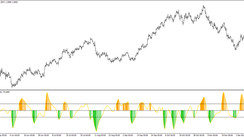The new week began with the strengthening of the dollar, while futures for major US and European stock indices resumed their decline. They are falling, including because of the threat of an escalation of tension on the Russian-Ukrainian border.
Regarding the dollar, it is worth saying that this week promises to be extremely volatile. On Wednesday (at 19:00 GMT) the minutes from the January meeting of the Federal Reserve (“FOMC minutes”) will be published.
The publication of the minutes is extremely important for determining the course of the current policy of the Fed and the prospects for raising interest rates in the US. It often contains either changes or clarifying details regarding the outcome of the last Fed FOMC meeting.
At the end of the January meeting, Fed leaders confirmed the decision to accelerate the reduction in asset purchases in order to complete the QE program in March 2022 and begin raising interest rates. Fed officials plan to raise interest rates three times in 2022.
However, there was information that an emergency meeting of the Fed is scheduled for today, at which the issue of the need to raise interest rates ahead of schedule may be discussed. As you know, last week the US Department of Labor reported another increase in consumer inflation in the country. Thus, the consumer price index (CPI) in January rose by 0.6% (+7.5% in annual terms). The data beat out forecasts that had expected a 7.2% YoY increase in CPI after rising 7.0% in December. This is the 8th month in a row that the annual inflation rate has exceeded 5%, nearly 4 times more the Fed's target of 2%. With this acceleration, there is a growing threat that the Fed may not be able to cope with rising inflation, and this threatens with hyperinflation, which can have a catastrophic effect on both the dollar and the prospects for the entire American economy.
If, during this emergency meeting, Fed leaders do decide to raise interest rates earlier than planned (in March), then the dollar could strengthen sharply.
Meanwhile, tomorrow at 00:30 (GMT) the minutes from the February meeting of the RBA will be published. As a result of this meeting, RBA leaders kept the key interest rate at 0.10%, but radically revised their forecasts, acknowledging that the economy is doing much better than they expected. At the same time, the RBA does not intend to raise interest rates until inflation stabilizes within the target range of 2%-3%. The bank also announced the end of its quantitative easing program, signaling that the end of government bond purchases does not mean that interest rates will be raised immediately.
According to the head of the RBA, Philip Lowe, there are still "no serious arguments in favor of tightening monetary policy in the short term". In his opinion, "before the increase in interest rates will take some time". In a recent House Standing Committee hearing, Lowe said it was likely that if the economy followed the bank's forecasts, a rate hike would be on the agenda as early as the end of this year. However, this does not mean that it will be increased soon after. While the Australian economy is coping with the coronavirus pandemic, there is currently no evidence of over-stimulation, according to Philip Lowe.
Thus, unlike the Fed, the RBA will for the time being maintain a soft course of its monetary policy, which means that the main driver of the AUD/USD dynamics is the strengthening of the US dollar.

Today's decline in prices for oil and other commodities against the backdrop of falling global stock indices is also putting pressure on commodity currencies, one of the main of which is the Australian dollar. And as we can see, AUD/USD is actively declining today, reaching an intraday low near 0.7085. A breakdown of this local support level will lead to further decline with the nearest target at the lower border of the descending channel on the weekly chart, passing through the mark of 0.6970.





